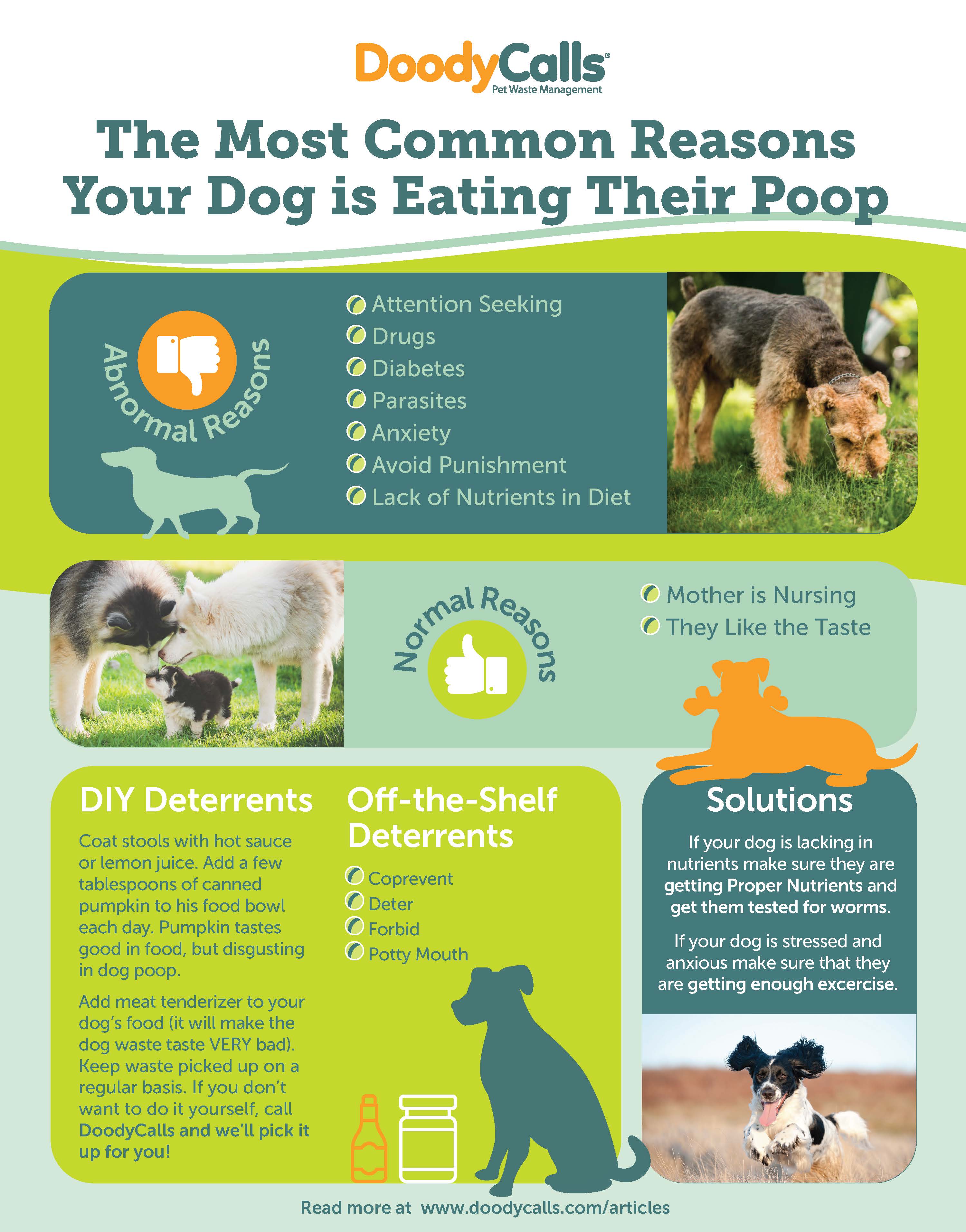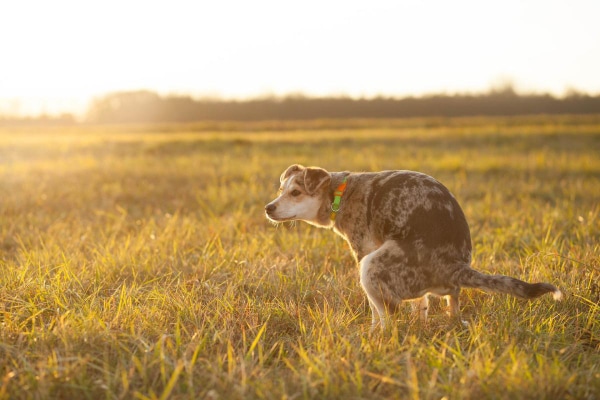A dog typically poops within 30 minutes to an hour after eating. The timing may vary depending on the dog’s individual metabolism and digestion.
Some dogs may poop immediately after eating, while others may take a bit longer. It is important to establish a regular routine for taking your dog out to poop to ensure proper elimination and maintain their overall health and hygiene.
Providing a consistent schedule and monitoring your dog’s bathroom habits can help prevent accidents and promote regular bowel movements. Remember to always clean up after your dog to keep the environment clean and sanitary.
:strip_icc()/_rat-poison-and-dogs-1118528_FINAL-f9339e663b414dcd951df36dcdaf8aba.png)
Credit: www.thesprucepets.com
Factors Affecting Dog Poop Timing
Have you ever wondered why your dog seems to magically know when it’s time to poop? Well, there are actually several factors that can affect how long after a dog eats it takes for them to poop. Understanding these factors can help you better anticipate your furry friend’s bathroom needs and ensure they stay healthy and comfortable.
Digestive System Of Dogs
The digestive system of dogs plays a significant role in determining when they will poop after eating. Dogs have a relatively short digestive tract compared to humans, which means food passes through their system more quickly. This rapid digestion process is especially true for dogs who eat a primarily meat-based diet, as their bodies are designed to process and extract nutrients efficiently.
Dog’s Diet And Eating Habits
The type of food a dog eats, as well as their eating habits, can influence how soon they poop after a meal. Dogs that consume a high-fiber diet, such as those on a commercial dog food with added fiber, tend to have more regular bowel movements. The fiber helps bulk up their stool and stimulates bowel contractions, leading to more frequent and timely pooping.
Additionally, the timing of meals can also impact when a dog will poop. Dogs often have a tendency to poop shortly after waking up or roughly half an hour after eating. So, if you’re feeding your dog two meals a day, keeping a consistent feeding schedule can help regulate their bathroom habits.
Size And Breed Of The Dog
The size and breed of a dog can also affect how soon they poop after eating. Smaller dogs generally have a faster metabolism and shorter digestion time, which means they may need to eliminate sooner after a meal. On the other hand, larger breeds with a slower metabolism may take longer to digest their food and poop.
It’s essential to consider your dog’s specific needs and adjust their meal and potty schedules accordingly. Regular monitoring of their bathroom habits will help you identify any potential issues or changes in their digestive health.

Credit: www.doodycalls.com
Typical Timeframe For Dogs To Poop After Eating
Dog owners often wonder how long they should wait after their furry friend eats before taking them out to poop. The typical timeframe for dogs to poop after eating can vary depending on several factors, including the dog’s size, age, and overall health. In this article, we will explore the timelines for dogs to poop after meals, exercise or playtime, and waking up.
After Meals
After a dog finishes their meal, they will usually need to eliminate waste within a specific timeframe. On average, most dogs will poop between 30 minutes to an hour after eating. This is because the digestive system needs time to process the food and move it through the intestines. However, it’s important to note that every dog is different, and some may need more or less time.
After Exercise Or Playtime
Physical activity, such as exercise or playtime, can stimulate a dog’s digestive system and speed up the time it takes for them to poop. Dogs often feel the urge to eliminate waste after being active. Therefore, it’s common for dogs to poop shortly after exercise or playtime. This timeframe can vary, but it is typically within 10 to 30 minutes after physical activity.
After Waking Up
Just like humans, dogs may need to use the bathroom after waking up from a nap or a night’s sleep. Dogs tend to hold their urine and feces while they are sleeping, and once they wake up, they may feel the need to eliminate waste. It is common for dogs to poop within 15 to 30 minutes after waking up. It’s essential to let your dog outside or provide access to a suitable designated area for this purpose.
Remember, the timeframe for dogs to poop after eating can vary and is influenced by various factors. It’s essential to observe your dog’s individual bowel habits to understand their specific needs better. If you notice any changes in their regular routine or if they’re experiencing difficulties passing stool, it’s best to consult with a veterinarian for guidance and potential underlying health concerns.
Monitoring And Managing Dog’s Pooping Schedule
Establishing a regular routine for your dog’s pooping schedule is essential to maintain their health and overall well-being. By creating a consistent and predictable routine, you can ensure that your furry friend stays regular and avoids any potential digestive issues. In this section, we will explore some effective strategies for monitoring and managing your dog’s pooping schedule.
Establishing A Regular Routine
Creating a regular routine for your dog’s bathroom breaks is crucial in maintaining their overall digestive health. Dogs thrive on consistency, so establishing a set schedule for their meals and potty breaks will help regulate their bowel movements. Here are some tips to help you establish a regular routine:
- Feed your dog at the same times every day. This will help regulate their digestion and establish a predictable pattern for their pooping schedule.
- Take your dog out for walks or bathroom breaks at consistent times throughout the day. Aim for at least three to four short walks or potty breaks to allow your dog to relieve themselves.
- Monitor your dog’s water intake and adjust the timing of their bathroom breaks accordingly. Providing water consistently throughout the day will help regulate their digestion and ensure regular bowel movements.
Observing Behavioral Cues
Observing your dog’s behavioral cues can be another helpful tool in monitoring their pooping schedule. Dogs often exhibit specific signs when they need to go potty. By paying attention to these cues, you can proactively address your dog’s needs. Here are some common behavioral cues to watch for:
- Restlessness or pacing: If your dog appears restless or starts pacing around, it may be a sign that they need to go outside and relieve themselves.
- Sniffing around: Dogs have a keen sense of smell, and if they start sniffing the ground or their surroundings, it could indicate that they are looking for an appropriate spot to relieve themselves.
- Whining or barking: Some dogs may vocalize or get your attention when they need to go potty. Pay attention to these vocal cues and take your dog out promptly.
Identifying And Addressing Potential Issues
In some cases, dogs may experience difficulties with their pooping schedule due to various factors. It is essential to identify and address any potential issues to ensure your dog stays healthy. Here are some potential issues to be aware of:
| Potential Issue | Symptoms | Actions |
|---|---|---|
| Constipation | Straining to poop, small or hard stools, infrequent bowel movements | Consult with your veterinarian for appropriate dietary changes or potential medical interventions to alleviate constipation. |
| Diarrhea | Loose or watery stools, increased frequency of bowel movements | Assess your dog’s diet and identify potential triggers. Gradually transition to a bland diet and consult with your veterinarian if the diarrhea persists. |
| Irregular bowel movements | Inconsistent pooping schedule, excessive straining or difficulty in passing stools | Ensure your dog is getting enough exercise and has a balanced diet. If the issue persists, consult with your veterinarian for further evaluation. |
By closely monitoring your dog’s pooping schedule and properly managing their routine, you can help prevent any potential issues and ensure their digestive health. Remember to always consult with your veterinarian if you have any concerns or if your dog experiences persistent irregularities in their pooping habits.

Credit: toegrips.com
Frequently Asked Questions On How Long After A Dog Eats Does It Poop
How Long After Eating Should I Take My Dog Out To Poop?
After meals, dogs typically poop within 30 minutes to an hour. However, the frequency of pooping can vary depending on the dog’s schedule and individual habits. Some dogs may poop after every meal, while others may go two to three times a day.
How Long Does It Take For A Dog To Poop Something Out After Eating It?
A dog can poop something out after eating it within a few hours or up to a day.
How Long Can Dog Hold Poop After Eating?
A dog can hold poop for a few hours after eating, but it varies. Some dogs poop after every meal, while others do it two or three times a day.
How Long Can A Dog Wait To Poop?
A dog can poop shortly after eating, usually within half an hour. The frequency of pooping varies, with some dogs going after every meal and others going two to three times a day. It depends on their routine and individual needs.
Conclusion
To answer the question “How Long After a Dog Eats Does It Poop,” the timing can vary depending on the dog’s routine. Some dogs may need to poop shortly after eating, while others may take longer. It’s important to establish a regular schedule for your dog’s meals and bathroom breaks to maintain their digestive health.
Remember to observe your dog’s behavior and adjust accordingly. By being attentive to their needs, you can ensure they stay comfortable and happy.


